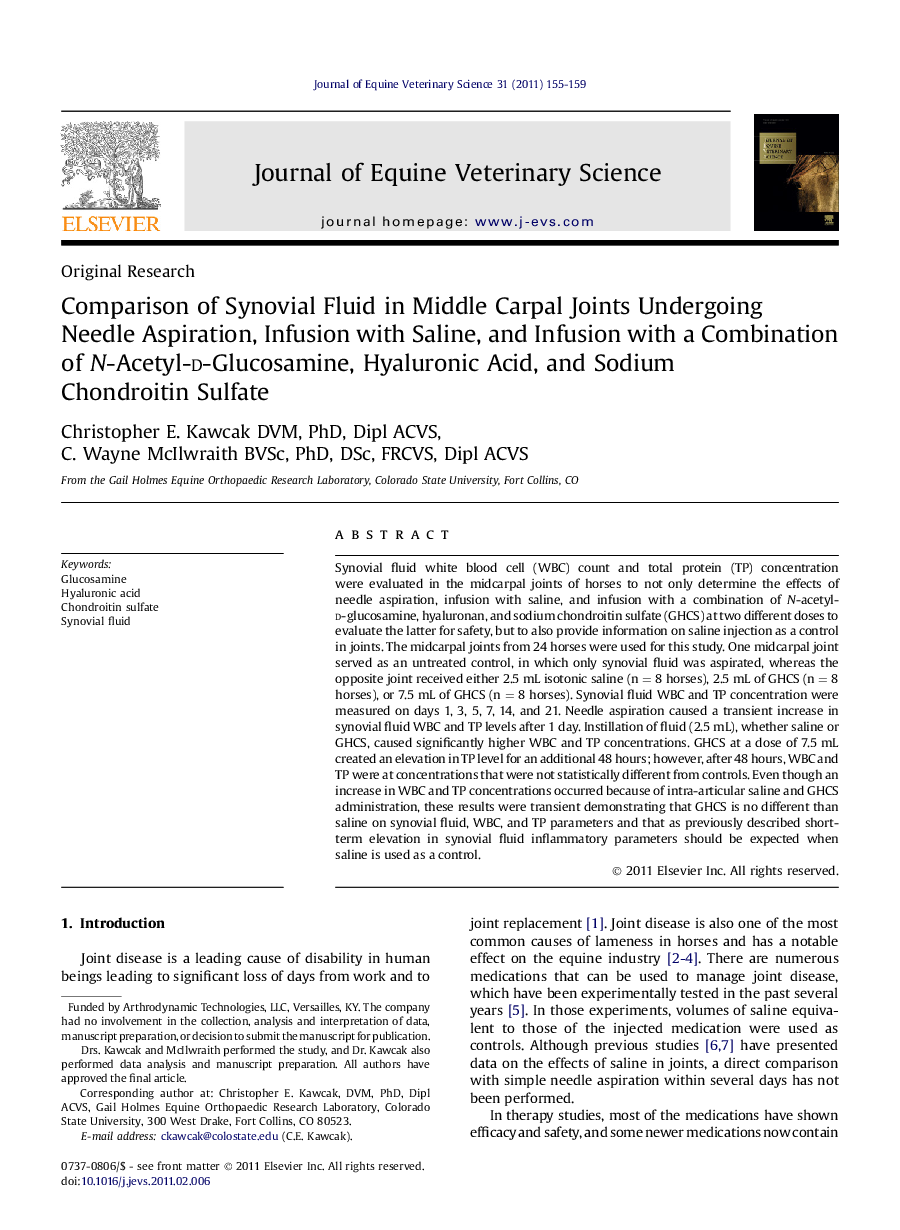| Article ID | Journal | Published Year | Pages | File Type |
|---|---|---|---|---|
| 10961752 | Journal of Equine Veterinary Science | 2011 | 5 Pages |
Abstract
Synovial fluid white blood cell (WBC) count and total protein (TP) concentration were evaluated in the midcarpal joints of horses to not only determine the effects of needle aspiration, infusion with saline, and infusion with a combination of N-acetyl-d-glucosamine, hyaluronan, and sodium chondroitin sulfate (GHCS) at two different doses to evaluate the latter for safety, but to also provide information on saline injection as a control in joints. The midcarpal joints from 24 horses were used for this study. One midcarpal joint served as an untreated control, in which only synovial fluid was aspirated, whereas the opposite joint received either 2.5 mL isotonic saline (n = 8 horses), 2.5 mL of GHCS (n = 8 horses), or 7.5 mL of GHCS (n = 8 horses). Synovial fluid WBC and TP concentration were measured on days 1, 3, 5, 7, 14, and 21. Needle aspiration caused a transient increase in synovial fluid WBC and TP levels after 1 day. Instillation of fluid (2.5 mL), whether saline or GHCS, caused significantly higher WBC and TP concentrations. GHCS at a dose of 7.5 mL created an elevation in TP level for an additional 48 hours; however, after 48 hours, WBC and TP were at concentrations that were not statistically different from controls. Even though an increase in WBC and TP concentrations occurred because of intra-articular saline and GHCS administration, these results were transient demonstrating that GHCS is no different than saline on synovial fluid, WBC, and TP parameters and that as previously described short-term elevation in synovial fluid inflammatory parameters should be expected when saline is used as a control.
Related Topics
Life Sciences
Agricultural and Biological Sciences
Animal Science and Zoology
Authors
Christopher E. DVM, PhD, Dipl ACVS, C. Wayne BVSc, PhD, DSc, FRCVS, Dipl ACVS,
